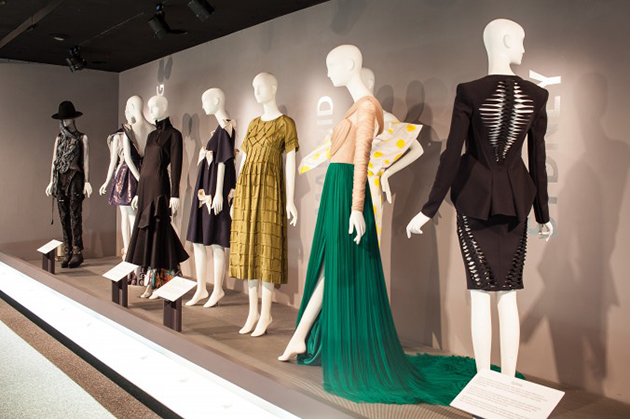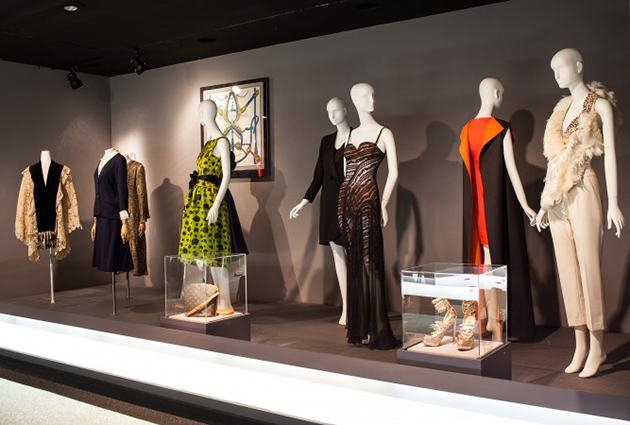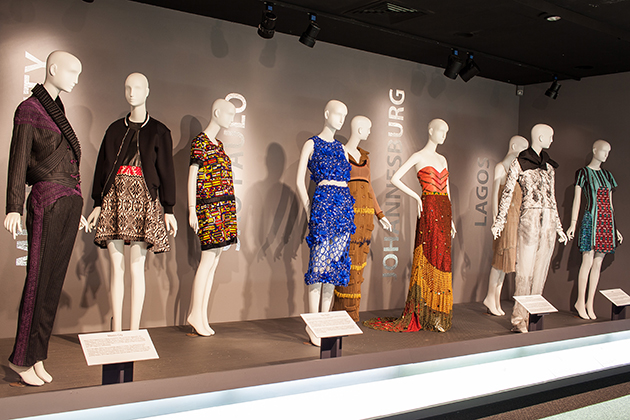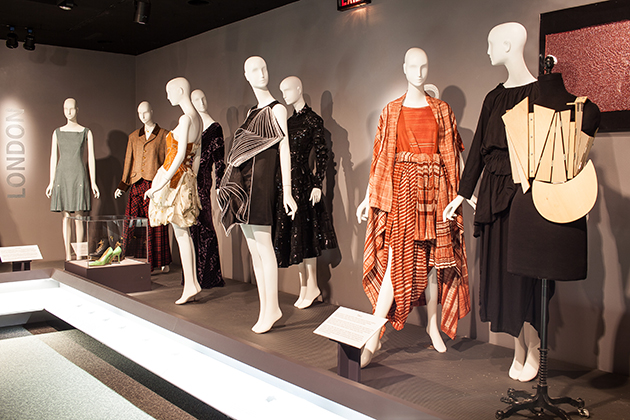
An exhibition is never just contemplative; it always needs an active audience to become stimulating and meaningful. Some exhibitions are made to reflect on a particular practice, some of them are ‘retrospective’, with a precise and wide glance at past. Others, while analysing both history and present time, are precisely made to look forward, to predict, to imagine – and thus to shape – the future. This is the case of “Global Fashion Capitals”, the exhibition which opened at the Museum at FIT on June 2 and will run until November 14. The exhibition, as the title clearly states, is based upon the relationship between fashion and its geographical distribution, or better, between fashion and its main centres.

Showcasing more than 70 garments and accessories, the exhibition gathers both vintage and recent designs, analysing them starting from their provenience. The exhibition opens with a digital map showing the current street style and runway fashion for each of the cities examined, demonstrating how fashion is now generated from the mixture of high and low, of catwalk and street, reinforcing the bond between the identity of the city and the characteristics of the designs, imagined, produced and shown in the city itself. Then, the exhibition goes deep in the matter, exploring not only the practice of the four ‘official’ fashion capitals, but also of other 16 cities that are emerging on the fashion scene for their fashion weeks – new destinations, such as Antwerp, Stockholm and Istanbul, are taken into consideration as a cradle of fresh styles and ideas.

Ariele Elia and Elizabeth Way, the curators of the show, created a sort of an ideal map, and decided to select designs from the most representative designers of each ‘national’ industry, trying to pick the essence of the cities. It is common to associate some characteristics – not to say prejudices – to the type of fashion produced in each capital. The specificity of these cities with respect to fashion allows us to consider its active role in the creative process, and in this sense the stereotype is useful because it becomes the basis on which to go forward without forgetting local roots. In this way, we can see the city not only as a theatre, but as an active agent in stories told by fashion.

The choice to put new centres alongside the old fab four – London, Paris, Milan and New York – seems inevitable, but actually, it is not so banal. Every journalist or insider knows that fashion weeks that count are still those four, and thus, for new capitals, it is difficult to be recognised and remain relevant. But, as many things happen in the fashion world, shifting the focus or choosing another centre around which to build the map, means changing the point of view and allowing us to discover a new global balance and new roads. The geographical movements also serve to encourage mixing, pastiche, citation, and often draw new shapes, dig new volumes, motivate new colours of the collections, seen on the runways and in stores. Fashion becomes a vehicle to explore distant and unknown cultures, intriguing proposals that seem to emerge directly from the ground of the city in which they are shown.
Marta Franceschini – Images courtesy of FIT
